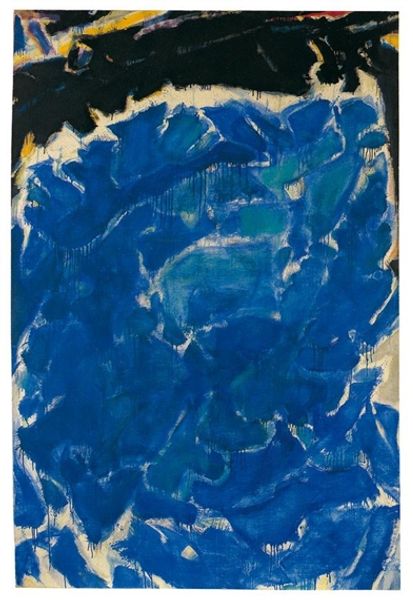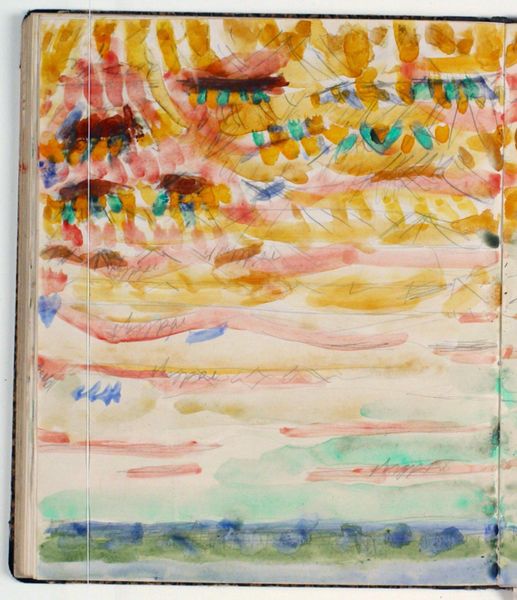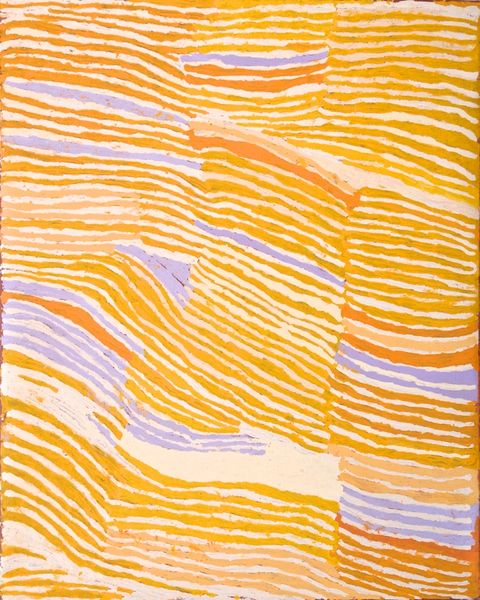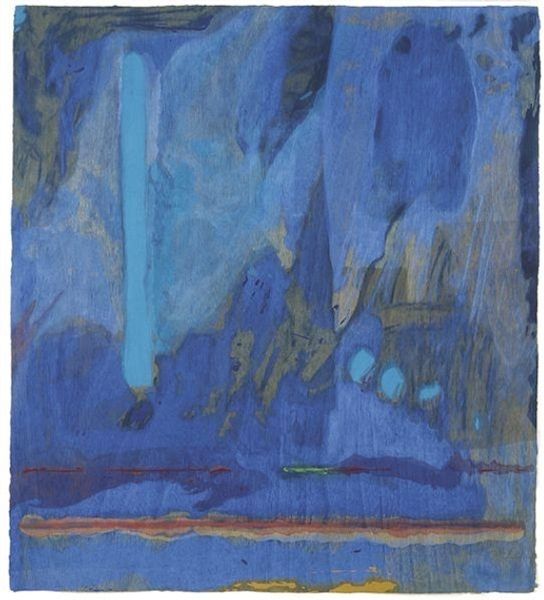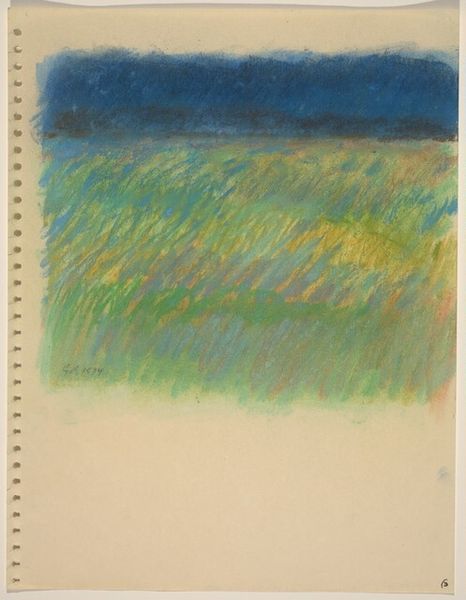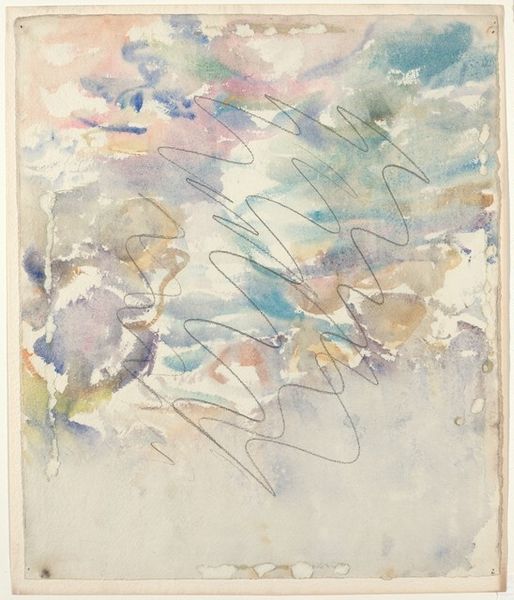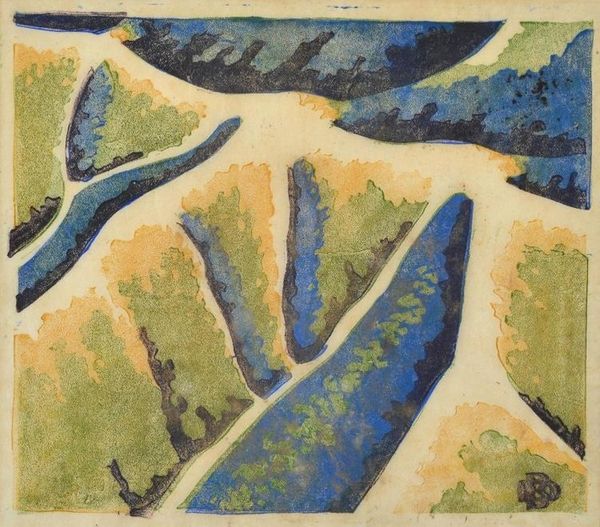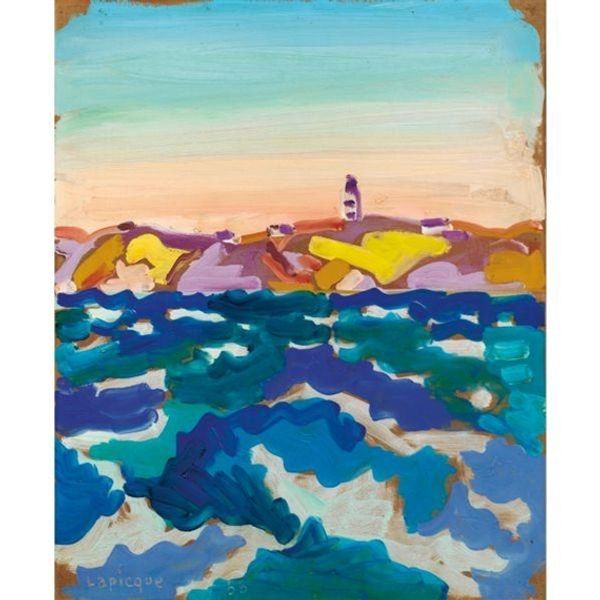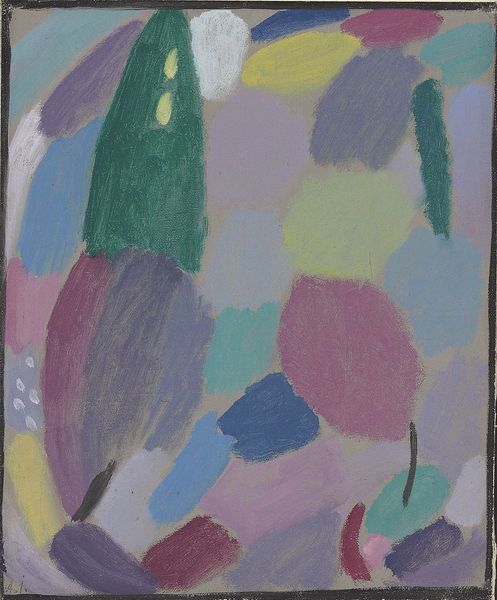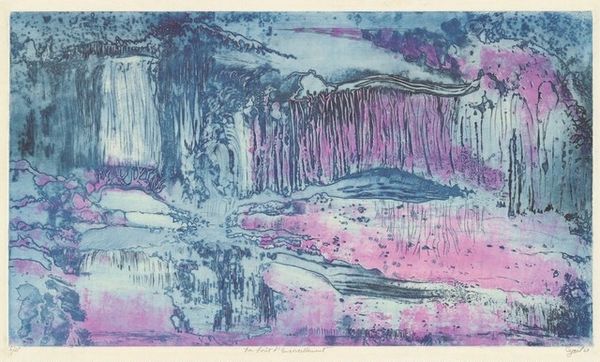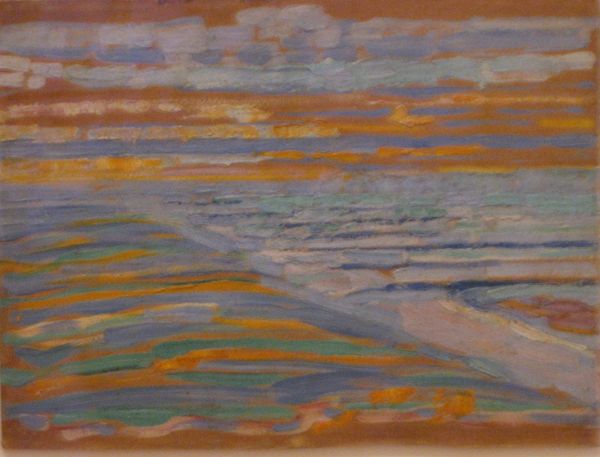
Copyright: Public Domain: Artvee
Curator: Before us hangs Edvard Munch's 1908 painting, "Waves." Munch, known for his evocative exploration of human emotion, particularly anxiety, offers here a watercolor that at first glance seems far removed from the angst of "The Scream." Editor: My first impression is that of a strangely serene, almost childlike rendition. The broad horizontal strokes create a simplified landscape dominated by blues and greens, yet with hints of turbulent color in the sky and foreground. Curator: It's interesting you say childlike, as around this period, Munch was emerging from a nervous breakdown. He had returned to Norway after several years spent in Copenhagen sanatorium to recuperate and it seems art critics have always placed this picture with his re-emergence onto the art market, which gave rise to several commissions by wealthy Norwegian industrialists. The waves may not represent a tranquil sea, but Munch regaining composure. Editor: I see what you mean. There's a compositional rigor that counters that initial impression. Look at how Munch uses repeated, almost rhythmic, strokes of paint. These unbroken horizontal strokes and lines create the basic design for the waves of blues and greens, divided in neat horizontal areas of space. The surface of the artwork almost feels decorative. Curator: Munch's work after his return from Copenhagen reflects the socio-economic growth and relative optimism found in Scandinavia at the beginning of the twentieth century. It is a clear stylistic turn from his symbolist art of the 1890s. This aesthetic can certainly be contrasted by works by his French contemporaries. The question I find most potent is, what makes this so undoubtedly, Munch? Editor: The heavy reliance on color and the rejection of objective, naturalistic perspective aligns perfectly with the subjective, emotionally charged landscape one might expect from Munch. There's still that familiar sense of disquietude. Curator: Ultimately, "Waves" stands as a poignant record, one that perhaps reminds us that art's purpose resides not just in its own formal devices, but in art being both intimately linked with culture. Editor: And while "Waves" does serve to be more complex and deep the more you analyze its structure, in all honesty I like it when it comes to shape, form and color, I find this one more playful and joyous than his more famed art.
Comments
No comments
Be the first to comment and join the conversation on the ultimate creative platform.
